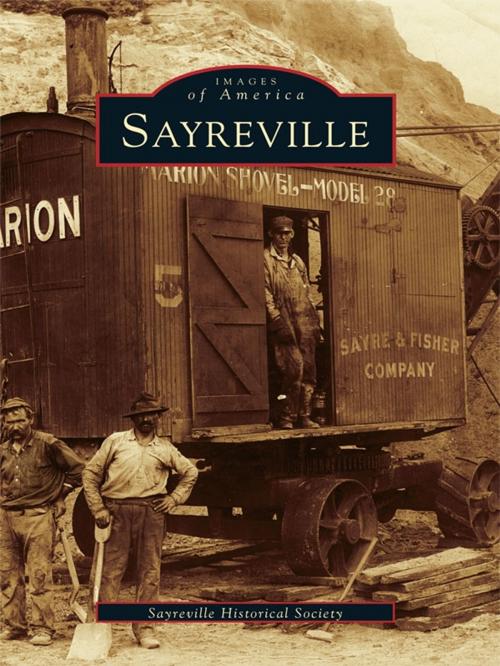| Author: | Sayreville Historical Society | ISBN: | 9781439627501 |
| Publisher: | Arcadia Publishing Inc. | Publication: | August 1, 2001 |
| Imprint: | Arcadia Publishing | Language: | English |
| Author: | Sayreville Historical Society |
| ISBN: | 9781439627501 |
| Publisher: | Arcadia Publishing Inc. |
| Publication: | August 1, 2001 |
| Imprint: | Arcadia Publishing |
| Language: | English |
Sayreville is located in Middlesex County on the southern bank of the Raritan River. The area, once known as Roundabout, sits where the river flows into Raritan Bay. The town's recorded history dates to the time when the Rarachon and Navisink tribes of the Lenni Lenape hunted and fished in the area's forests and rivers. Once a part of South Amboy, Sayreville separated and was established as an independent township in 1876. Sayreville's past as a riverfront community is entwined with that of sailing vessels, clay banks, pottery, and brick making. The town quickly became the gateway to America for hundreds of immigrants and their families, who mined the rich clay deposits and labored in the brickyards. At one time, almost every family in town was somehow involved in the brick-making process, as Sayreville became the largest brick-manufacturing center in the United States. During the last century, other industries developed, including the manufacture of clay tile, glass, gunpowder, paints and pigments, nitrocellulose, solvents, photographic and x-ray film, cookies, and crackers.
Sayreville is located in Middlesex County on the southern bank of the Raritan River. The area, once known as Roundabout, sits where the river flows into Raritan Bay. The town's recorded history dates to the time when the Rarachon and Navisink tribes of the Lenni Lenape hunted and fished in the area's forests and rivers. Once a part of South Amboy, Sayreville separated and was established as an independent township in 1876. Sayreville's past as a riverfront community is entwined with that of sailing vessels, clay banks, pottery, and brick making. The town quickly became the gateway to America for hundreds of immigrants and their families, who mined the rich clay deposits and labored in the brickyards. At one time, almost every family in town was somehow involved in the brick-making process, as Sayreville became the largest brick-manufacturing center in the United States. During the last century, other industries developed, including the manufacture of clay tile, glass, gunpowder, paints and pigments, nitrocellulose, solvents, photographic and x-ray film, cookies, and crackers.















